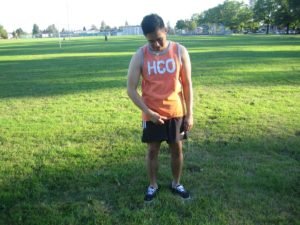It is important to note that groin and hip pain can indicate either a soft tissue injury in the groin or hip or a compressed nerve. The possible soft tissue injuries include muscle strain, hernia and hip arthritis. Walking, standing and other activities can worsen the symptoms. The treatment options tend to vary but often include rest, application of ice and physical therapy. A doctor should be consulted for appropriate diagnosis and management.
Muscle strain and hernia
Groin and hip pain can be caused by muscle strain. A tear or strain on the adductor muscles or tendons situated in the inner thigh and grain can cause groin pain. Other symptoms include muscle weakness, hip stiffness and swelling. Walking and standing can increase the groin and hip pain.
The adductor strain can also be a sports hernia that can develop into an inguinal hernia. This occurs when part of the small intestine protrudes through the groin muscles. Unlike with inguinal hernia, sports hernia will not cause a bulge in the groin.

Nerve compression
Once the inguinal nerves are compressed, it can lead to groin or hip pain. If the individual had back or hip surgery, muscle tightness or a tumor can cause compression of the nerves. Take note that obturator nerve entrapment is difficult to diagnose but usually occurs with any injury to the hip, low back or groin. Tingling, numbness, muscle weakness and deep ache in the groin are other symptoms. Walking and standing can worsen the symptoms which will cause the individual to limp.
Hip osteoarthritis
Hip osteoarthritis involves the degeneration of the cartilage in the hip. Along with groin and hip pain, there is joint stiffness, muscle loss and cracking sound. Weight bearing activities such as walking will increase the symptoms and further degenerate the joint. The development of bone spurs is considered as a complication that can worsen the pain, catching sensation in the hip and diminished hip movement.
Other possible causes
Other conditions such as tendinitis, acetabular labral tears, stress fractures, osteitis pubis and a compressed nerve can cause groin and hip pain. When it comes to an acetabular labral tear, it occurs when the cartilage around the hip joint tears, resulting to pain and joint instability. The labral tears can also increase the risk for developing osteoarthritis. As for osteitis pubis, it involves the inflammation of the pubic bone, resulting to pain that radiates from the pubic bone into the groin and anterior hip.
Treatment
Depending on the cause, the primary treatment includes rest, application of ice, compression and elevation of the hip and leg. If you want to learn more about the RICE method, enroll in a first aid course. (Read here for more information about the courses). The pain can be reduced by providing non-steroidal anti-inflammatory drugs (NSAIDs) as well as the use of crutches while walking.
Physical therapy or surgery might be recommended for severe injuries. Physical therapy will help the individual manage the symptoms as well as restore flexibility and strength.
